The C. F. Martin Orchestra Model Guitar

The 1930 Martin 000-28 O.M. Orchestra Model and OM-45 DeLuxe
Until 1929, all six string Martin guitars had necks with 12 frets clear of the body. As the tremendous popularity of the four string tenor banjo waned, guitar builders sought to attract banjo players to the guitar by creating a guitar with access to more frets, to emulate the longer necked banjo.
Martin's first attempt to build a guitar with 14 frets clear of the body, to provide greater access to the upper frets, was achieved by simply attaching the neck of the four string Martin tenor guitar at the 14th fret, and moving the bridge upwards to compensate. This bridge placement, however, proved less than ideal.
By late 1929, Al Esposito of the Carl Fischer stores suggested an alternative, special ordering a tenor guitar which became known as the Carl Fischer Model, which added access to two extra frets by shortening the guitar's upper bout.
Soon after, Perry Bechtel of the Cable Piano Company, upon visiting the Martin factory to meet Mr. Martin for a fishing trip and seeing the Carl Fischer Model, requested a fourteen fret clear six string version of the Martin 000-28 guitar, and the Orchestra Model was born.
For many years, Bechtel was credited with conceiving of the 14 fret neck Martin guitar, while it was actually Mr. Esposito who sketched his conception of the new model, complete with shortened upper bout, and Mr. Bechtel's contribution was dependent on the grace of a fishing trip!
Note that the early Carl Fischer model has a small upper bout and no pickguard. Soon after, the upper bout was widened and a pickguard added, and the resulting tenor guitar was eventually cataloged as the standard 0-18T still in use today. The original OM prototype ordered by Perry Bechtel has remained unseen in modern times, possibly destroyed in a massive fire at the Cable Piano Store, so we don't know if it may have had the smaller upper bout, and/or no pickguard, as well. Several of the early OM-28 were also ordered with no pickguard.
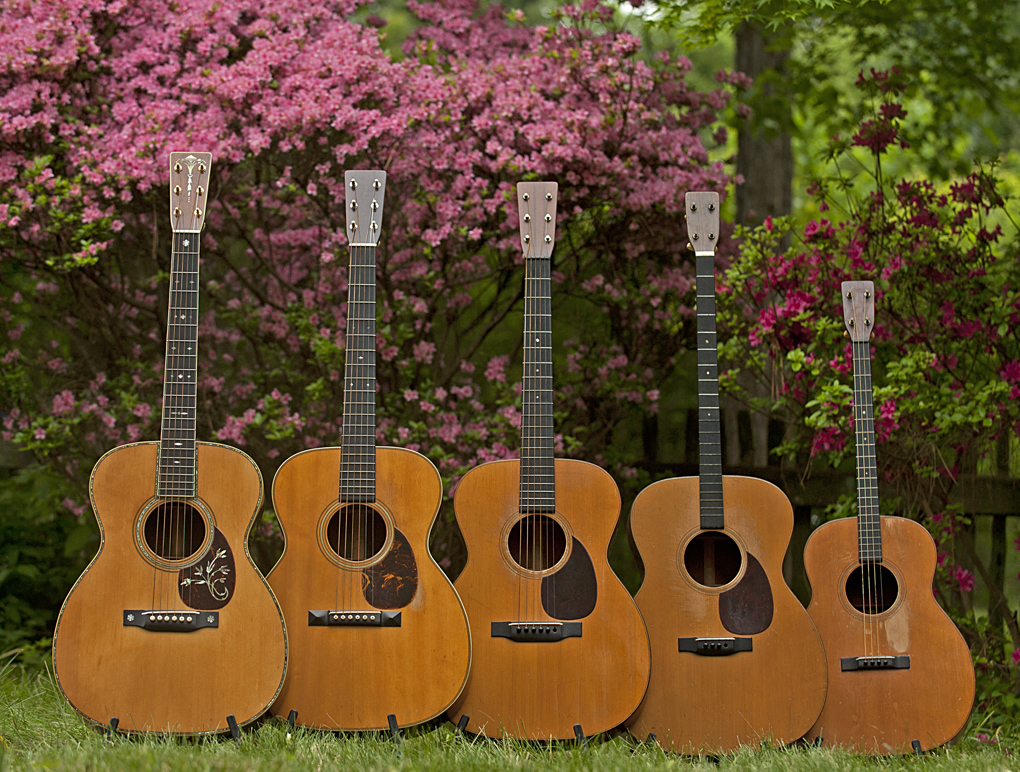
1930 OM-45 DeLuxe, 1930 000-28 O.M. Orchestra Model, 1930 OM-18, 1930 OM-18P, and 1929 0-18T (Carl Fischer Model - Gear Pegs)
The OM-28 was soon followed by the OM-18 and the OM-18P Plectrum Guitar appeared in 1930. The plectrum seemed a natural, since the OM was specifically made to suit banjo players, who were used to a long neck, and who were moving to the guitar to match changing tastes. In 1931 Martin added a handful of plectrum guitars in the C-1 and C-2 round hole archtop styles. By the end of 1931, Martin had built it's last Plectrum Guitar.
By 1930, the Carl Fischer Model had become the standard 0-18T. By 1934, what was formerly known as the OM-18 and OM-28 had become the standard Martin 000-18 and 000-28.
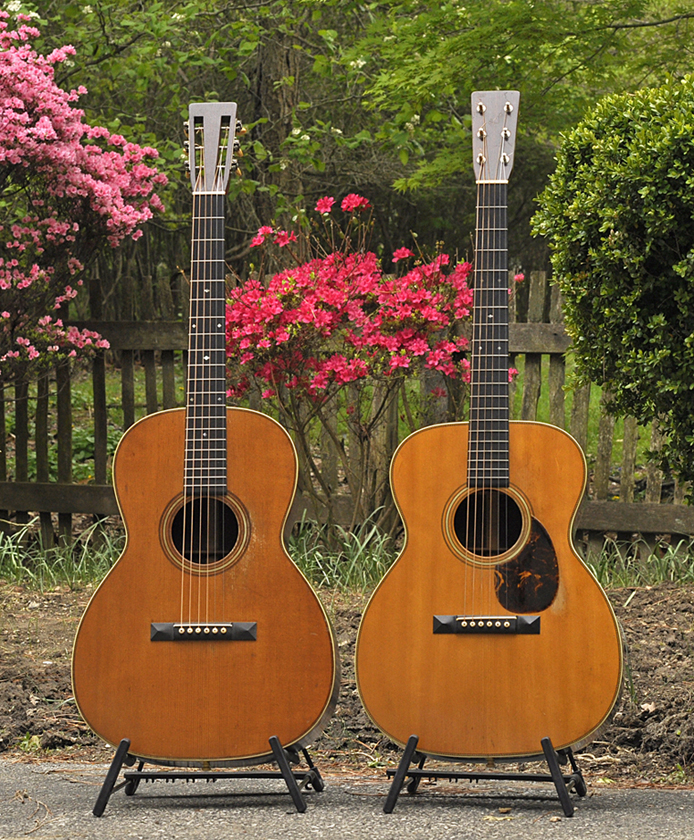
The 12 Fret 1929 000-28 and early 1930 OM-28
This 12 fret 000-28 was built in the spring of 1929, and stamped on the first of May, just eleven weeks before Martin stamped their first 14 fret neck clear body for the Carl Fischer tenors on July 16.
The following photograph illustrates the evolving body shape of the early 14 fret tenor guitars. Note the smaller and rounder upper bout of the Carl Fischer Model.

A 1928 Martin 2-18TL, Martin's first attempt at a 14 fret tenor guitar, a 1930 Martin Carl Fischer Model with OM style pickguard, and a 1930 Martin 0-18T with wider upper bout.
This OM-28 shows transitional features that are seen on the earliest OM's: banjo style tuners, a pyramid style bridge, a small teardrop shaped pickguard, and a rare 1 13/16" wide neck that was requested by Perry Bechtel for his personal guitar, and has been seen on only a couple of others.
While not as pronounced as the Carl Fischer, the early OM from 1929 and 1930 presents a slightly rounder upper bout than later OM and 000 Martins which intersect with the neck at a perpendicular with a more square nearly 90 degree angle.
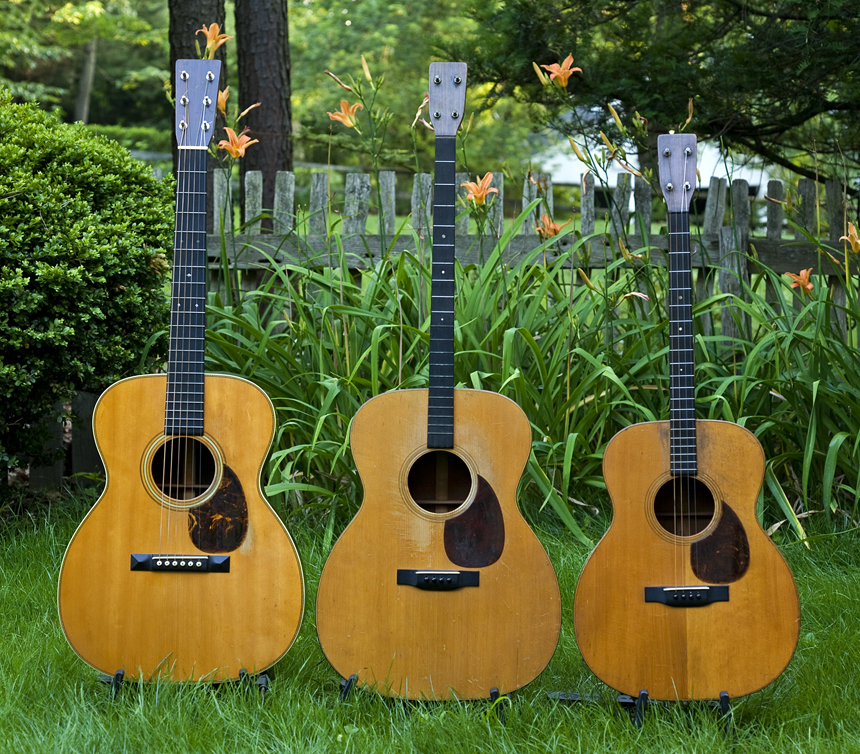
Early 14 fret clear body OM-28, OM-18P, stamped October 24, 1930, and 0-18T
C.F. Martin 1930 000-28 Orchestra Model
Beautiful original condition early OM from the second batch of five - made in January of 1930.
One of the handful of original OMs built with a pyramid bridge, teardrop pickguard, and banjo style tuners.
While the 000-28 12 fret had a 1 7/8" wide neck, the new OM model had a 1 3/4" neck. The original example built for Perry Bechtel, and possibly one or two of the others of the roughly dozen or so built in 1929, had a 1 13/16" wide neck.
This is the only 1930 example I know of to have the 1 13/16" wide neck.
An historically important transitional guitar combining old world craftsmanship with the sound and playability of a modern 14 fret long scale guitar. Recently brought to absolute optimum playing condition by OM specialist T.J. Thompson. TJ installed new reproduction tuners, for which he aged the buttons, to save old tuners. The vintage tuners in fine shape are preserved in the case. TJ proclaimed this to be about the nicest OM of the many he's seen.
Serial number 40932
Stamped January 11, 1930
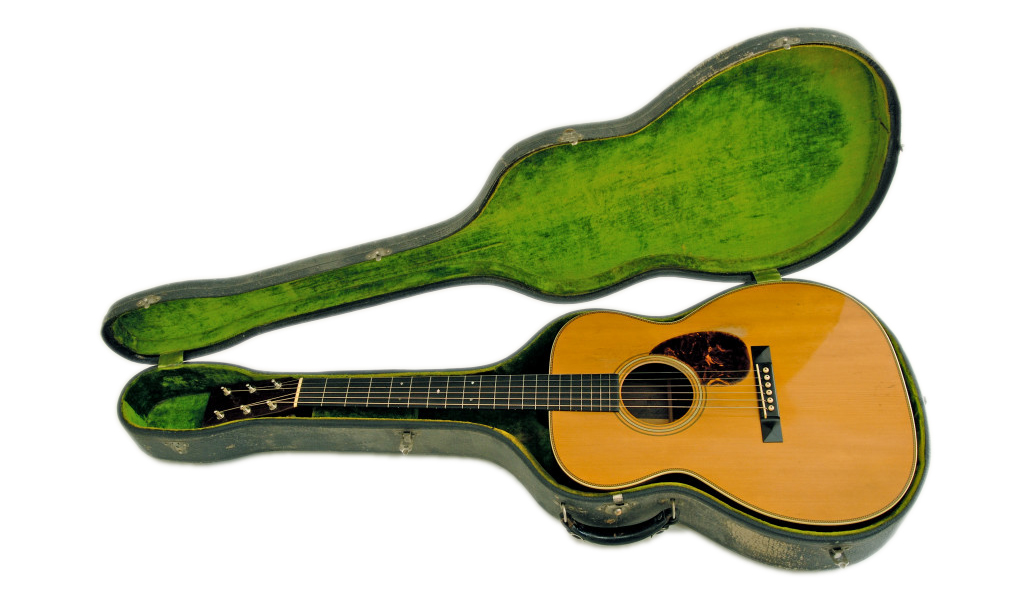
This guitar, built in January, 1930, was listed as a 000-28/OM Orchestra Model
This case is somewhat of a mystery. I originally thought it might have been ordered for a long and narrow necked plectrum guitar, but the neck on this case is a good 4" too long for even a plectrum OM. It was most likely the result of a miscommunication or miscalculation in ordering a case for a strange and newfangled guitar before ordering for a 14 fret clear body had become routine
.
The first couple of individual examples of 1929 were listed in the records as 000-28 Perry Bechtel
followed by a small batch listed as 000-28S Perry Bechtel Model
(likely the first and last instance where the "S", then used to indicate "Special", as in "Special Order", but later used to indicate a "Standard" 12 fret vs. a 14 fret,
signified that this was a 14, not a 12 fret!)
a batch listed as 000-28P Perry Bechtel, (the first 14 fret Plectrum)
and then 000-28 O.M. Perry Bechtel Model
Then mine, the first of 1930, is listed as 000-28 O.M. Orchestra Model
followed by the first non-tenor 14 fret 18's, logged as 000-18 O.M.
and 000-28 O.M. O Model
and finally quite a few batches listed alternately as 000-28 O.M. or 000-18 O.M. or O Model 000-28 or O Model 000-18
It wasn't until March, when the first two OM-45 were built that Martin dropped the "000" from the name and called them OM/45 and then OM/28.
But even after this, Martin made a batch of Plectrum Guitars, 000-18 O.M. Plectrum
As you can see, the name was a moving target, evolving with every batch. We used to think there was something special about the 1929 "Prototypes", but the OM was constantly evolving through it's first year or so, and there is really nothing more distinctive about the 1929 examples than early 1930 ones, for example.
These were a 000 size guitar, and "Orchestra Model" was the designation for the new 14 fret body shape. In fact, the first D-28's with 14 fret necks were listed in the catalog as "D-28 Orchestra Models". So they were recognized as being different from the beginning, the only significant change being a shortening of the name from "000-28 Perry Bechtel" to "000-28 O.M." to "OM-28".
Only the earliest OM-28 have pyramid bridges. For many years the common wisdom said that only the few OM-28 from 1929 had pyramid bridges. In truth, Martin switched to the belly bridge in March of 1930, but many of the earlier OM-28 remained in the factory unsold due to slow sales of this new model during the Depression, and were given belly bridges before they left the factory.
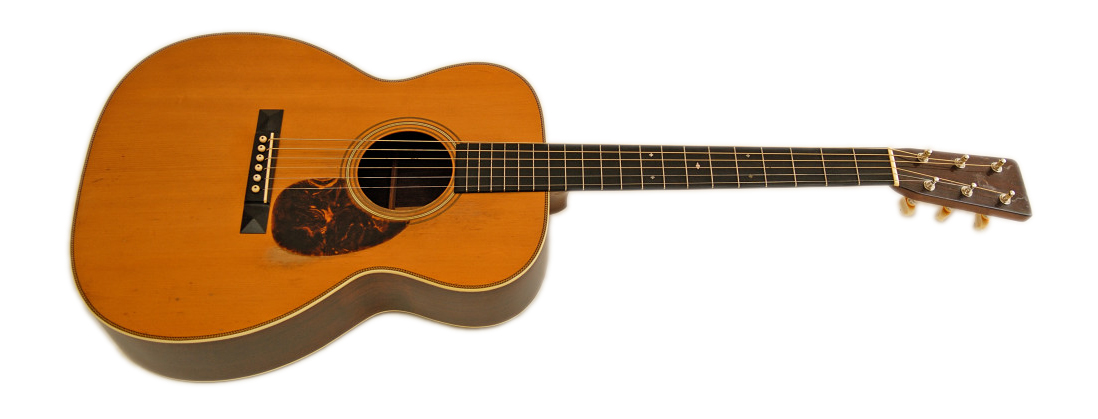
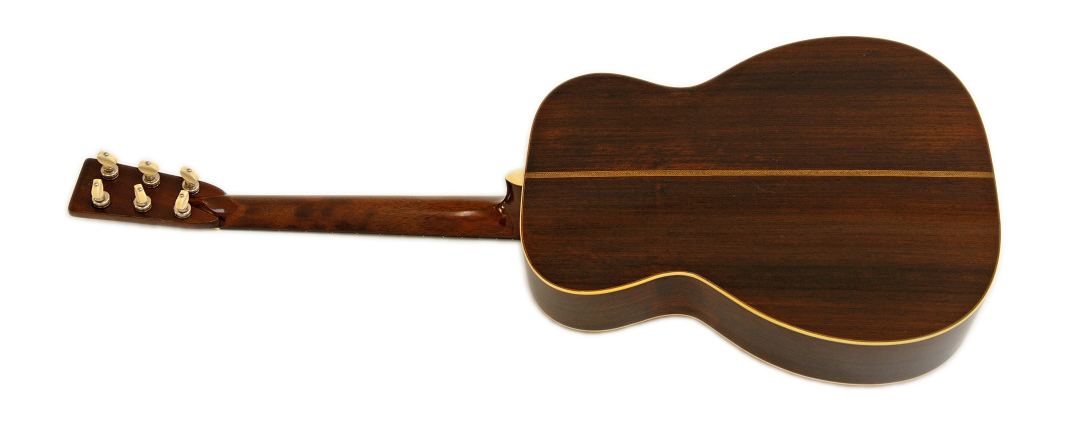

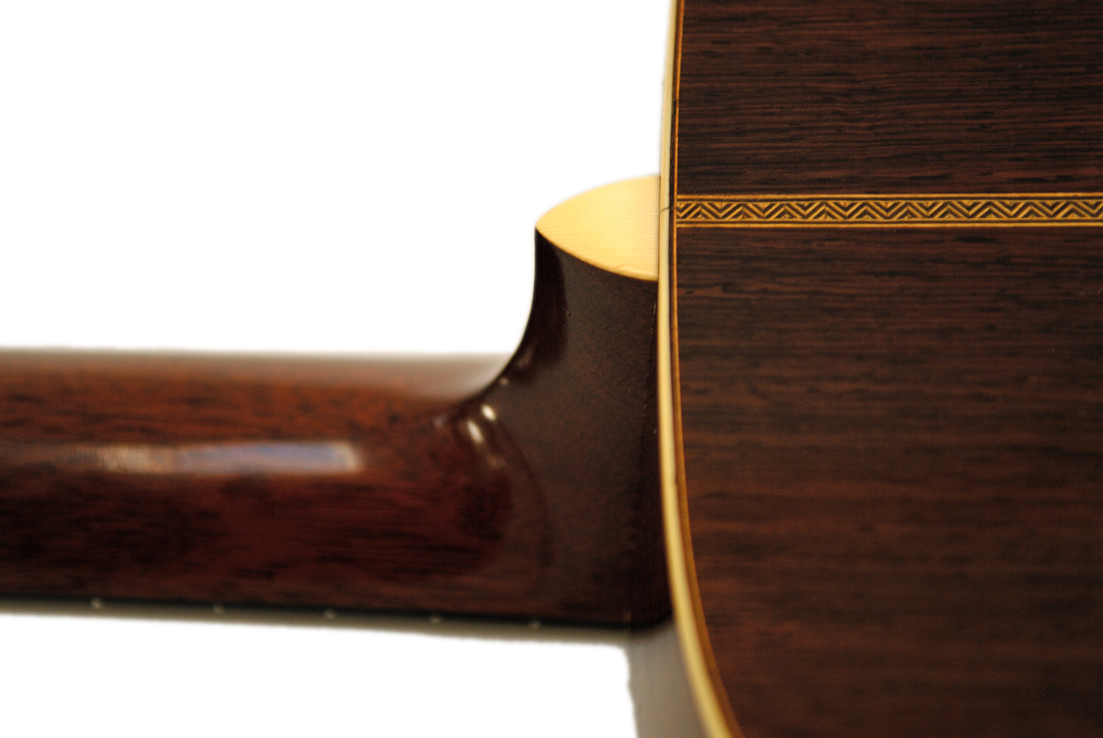
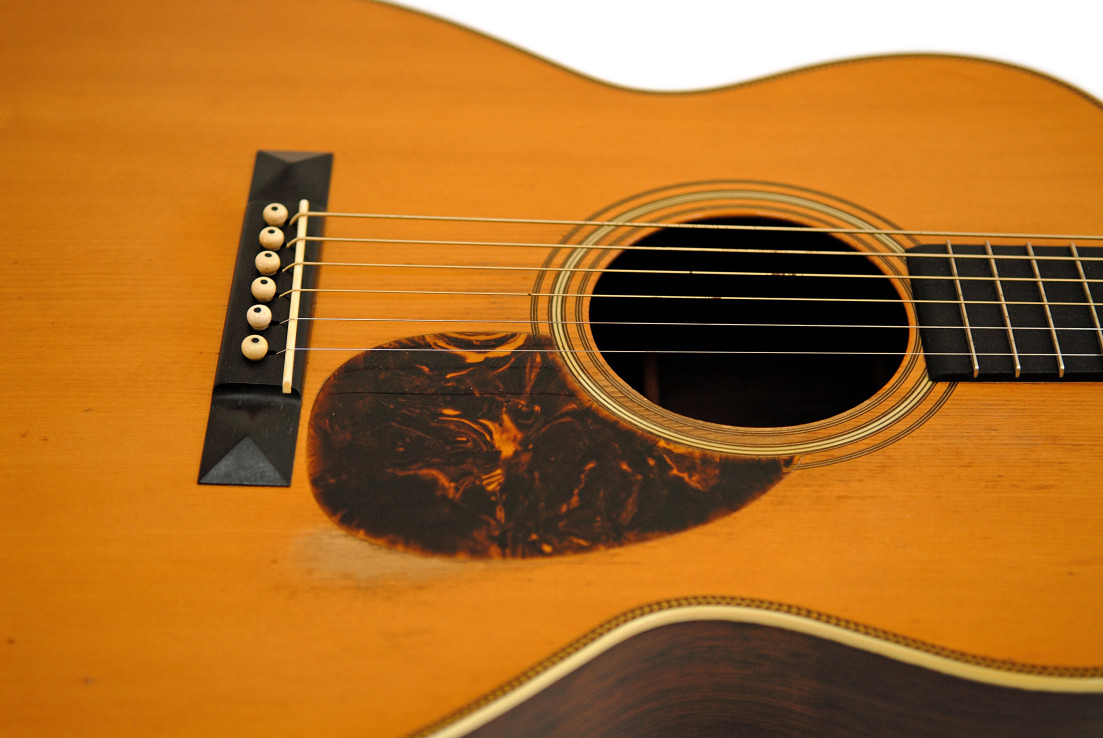
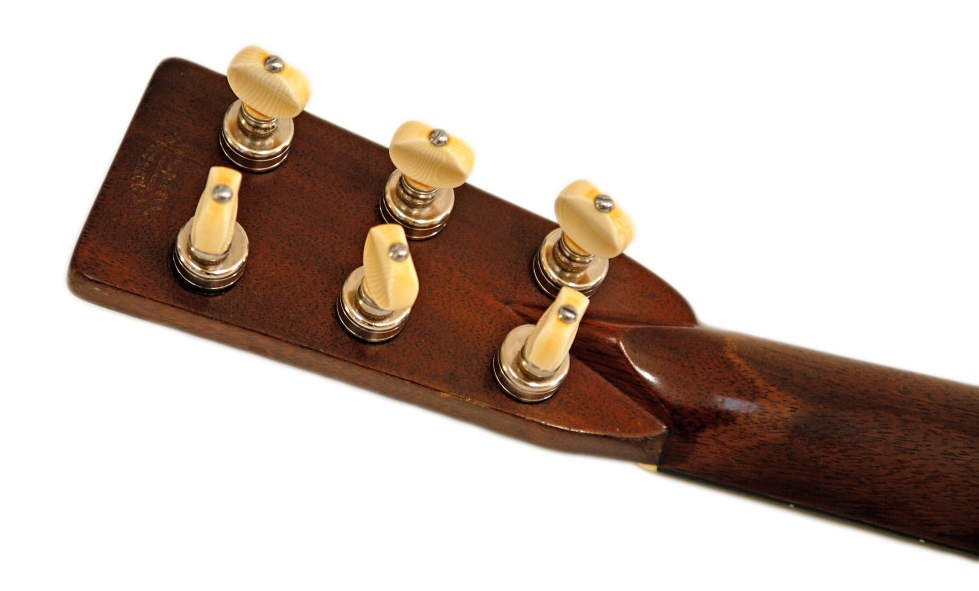
C.F. Martin 1930 OM-18
Serial number 43985
Stamped September 13, 1930
Shortly after introducing the rosewood back and sides OM-28, Martin built the first two examples of the OM-18, a version of the Orchestra Model with mahogany back and sides.
This original condition early OM-18 is from the first batch of ten - made in September of 1930, following the first two examples built in January, and three built in April, and followed by a number of batches of 25.
The OM-18, like all "Orchestra Model" Martins, were built with a 14 fret neck with the longer 25.4 inch scale which was borrowed from the 12 fret 000, and which was later adopted by the Dreadnaught. With the beginning of 1934, the OM-18 was re-named as the 000-18, while still retaining the long scale, before the short 24.9 inch scale 14 fret neck was adopted as standard by the 000-18 later in the year.
While some collectors have been on a quest to find one of the early OM-18 with a pyramid bridge, Martin discontinued the pyramid bridge on a Style 18 in 1926, replaced it with a plain, straight rectangular bridge, so the two OM-18 built in early 1930 would have the plainer style bridge.
One of the early original OMs with a teardrop pickguard and Grover banjo style tuners:
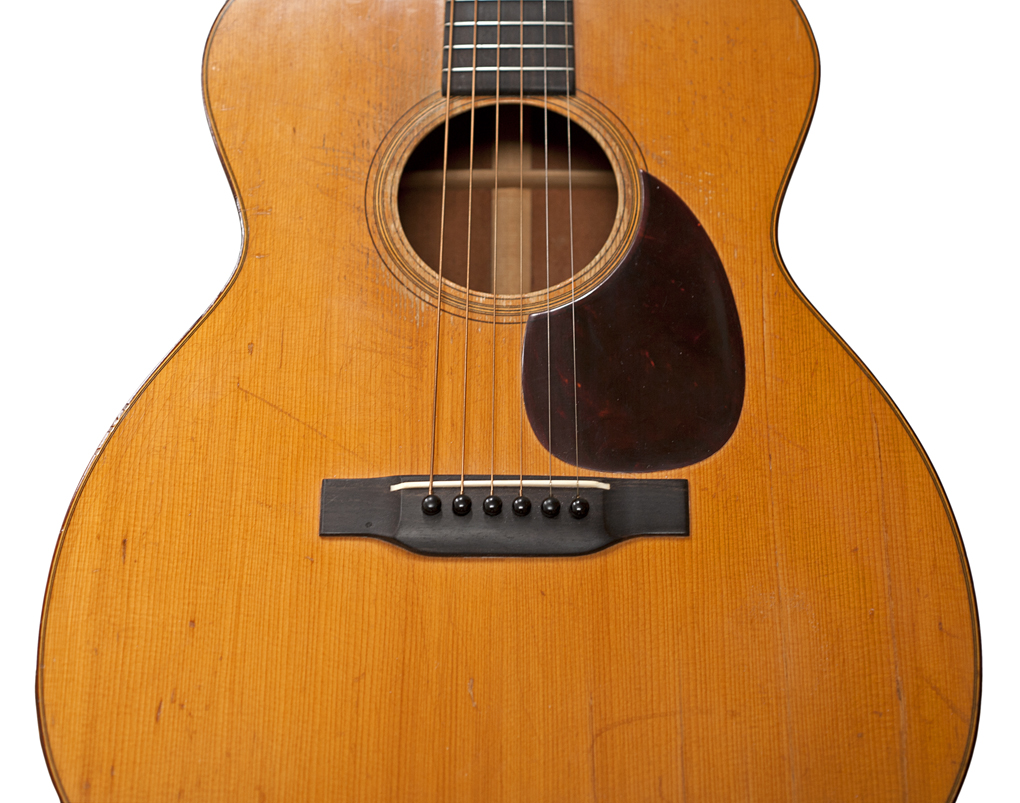
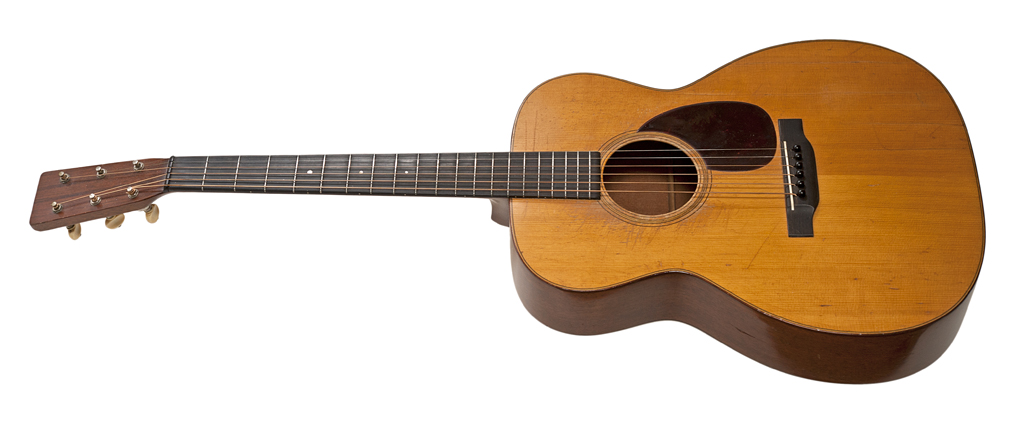
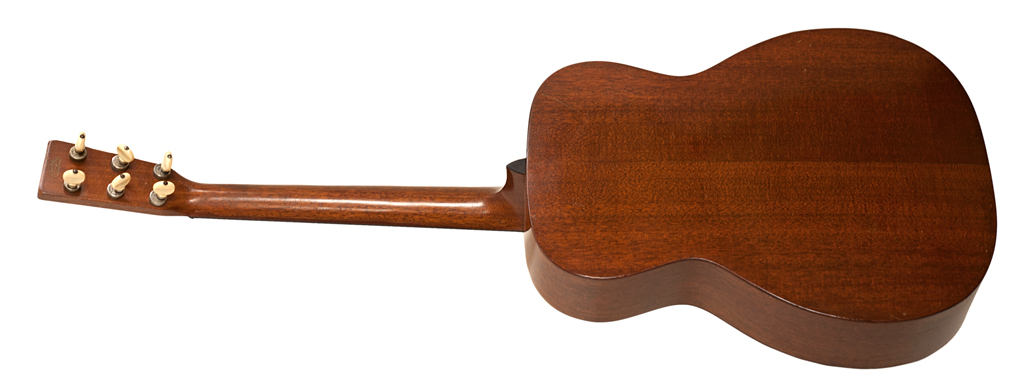
3lb. 1.2 oz.
The earliest OM-18 guitars are extremely light weight, with thin backs and sides, which makes it rare to find an example without multiple cracks in the mahogany.
Martin appears to have been mindful of matching the pickguard to the guitar, as the early mahogany OM sports a rather solid dark blood red pickguard, while the contemporaneous rosewood OM-28 sports a brownish pickguard with large swirls.
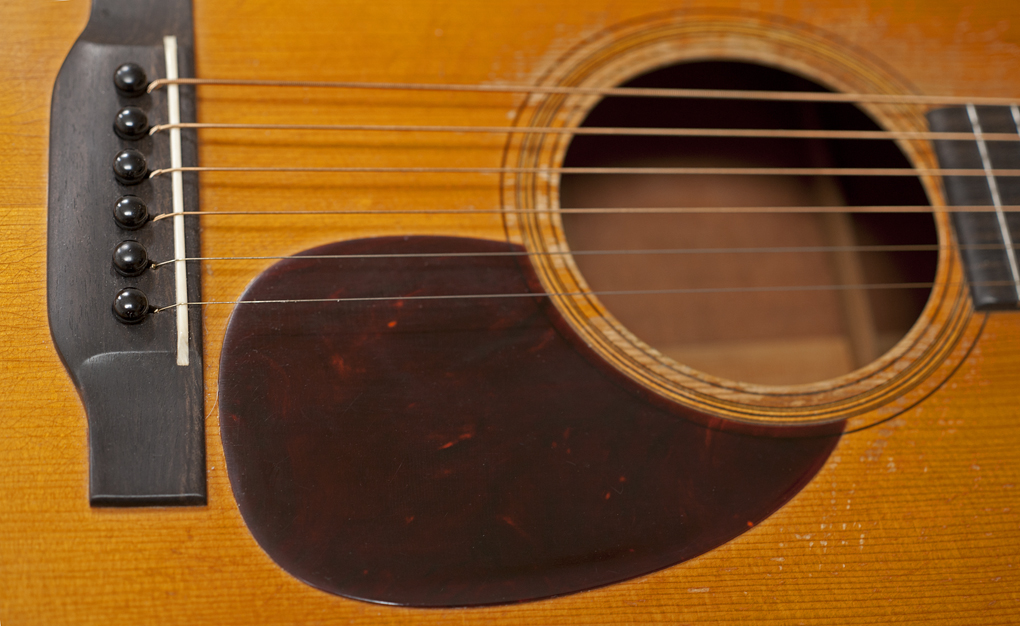
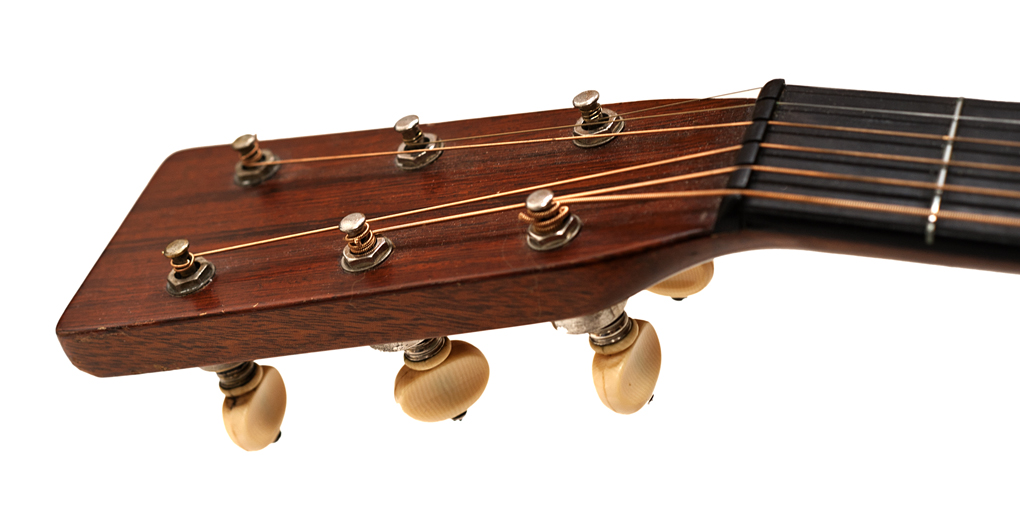
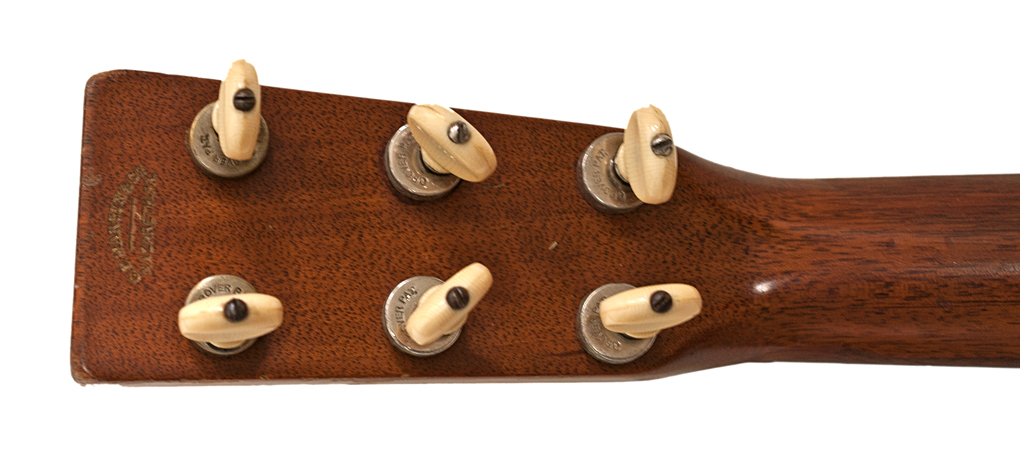
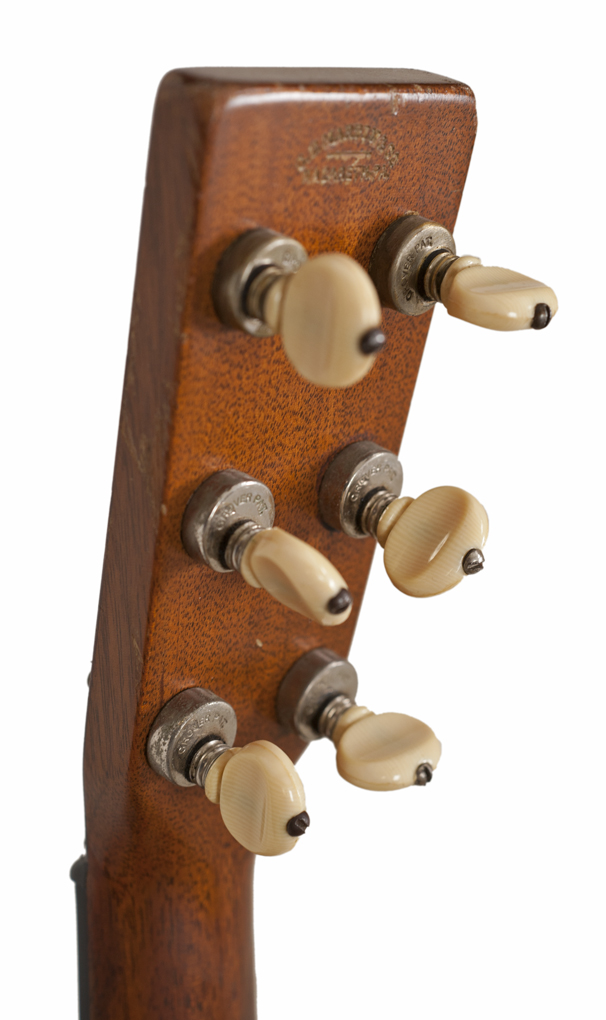
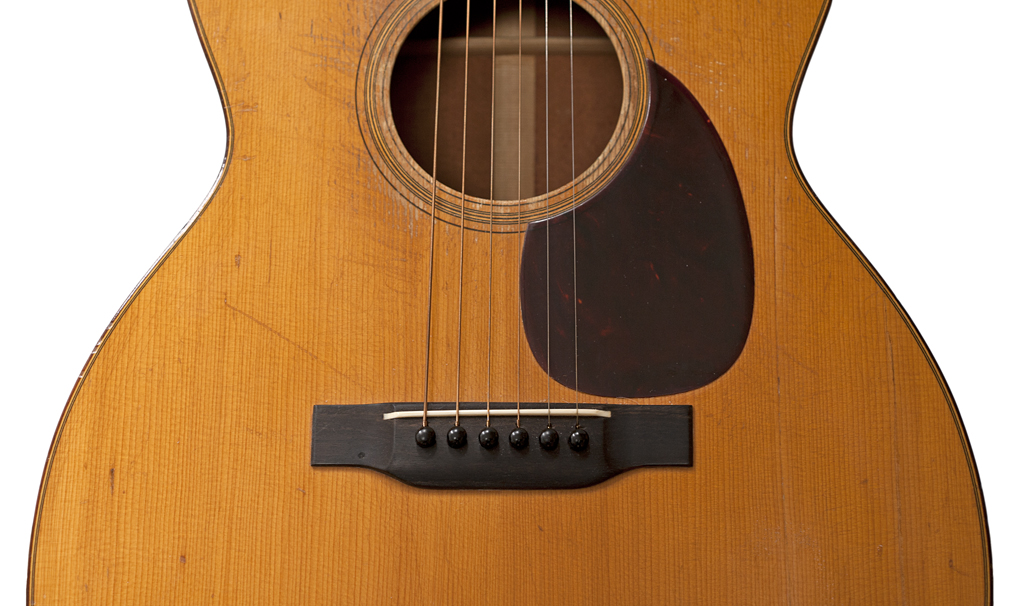
C.F. Martin 1933 0M-18
Serial number 54864
Stamped December 4, 1930
3lb. 4.2 oz.
This later example, from the final batch of OM-18's, stamped in December of 1933, has a full size pickguard and regular clipped-end Grover tuners, the first design to follow the banjo style tuners.
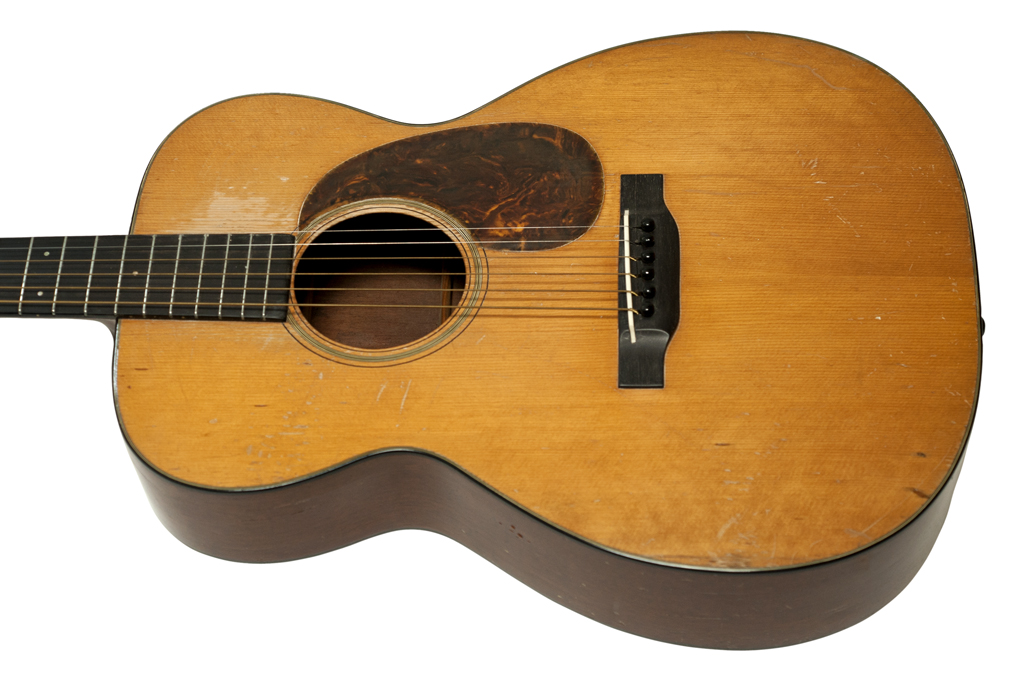
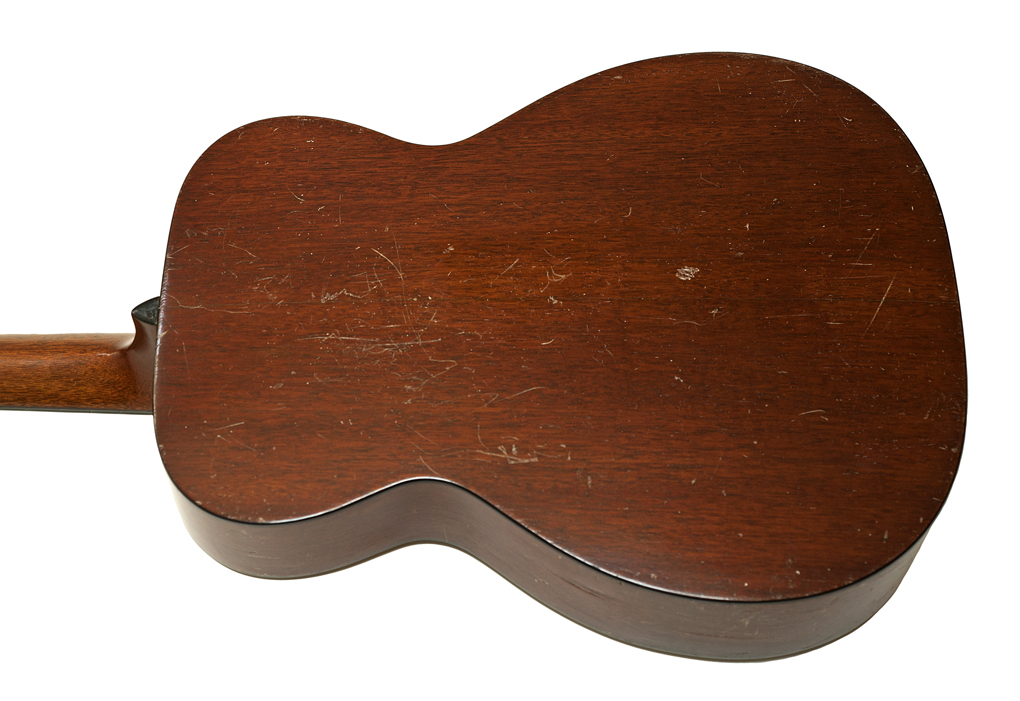
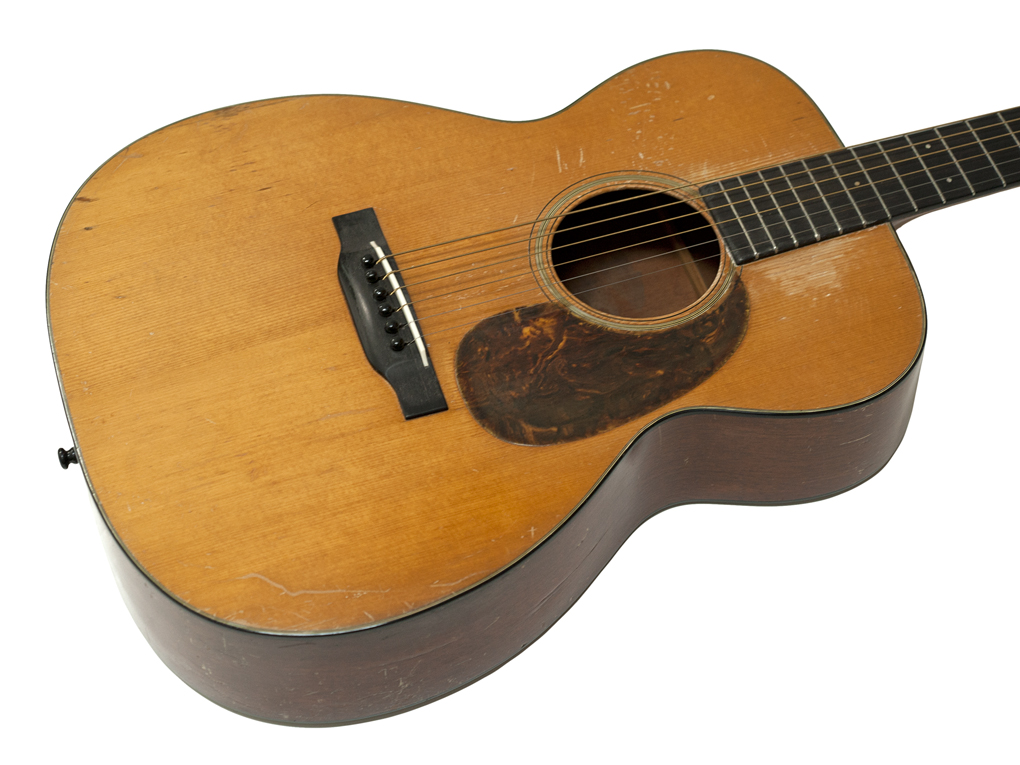
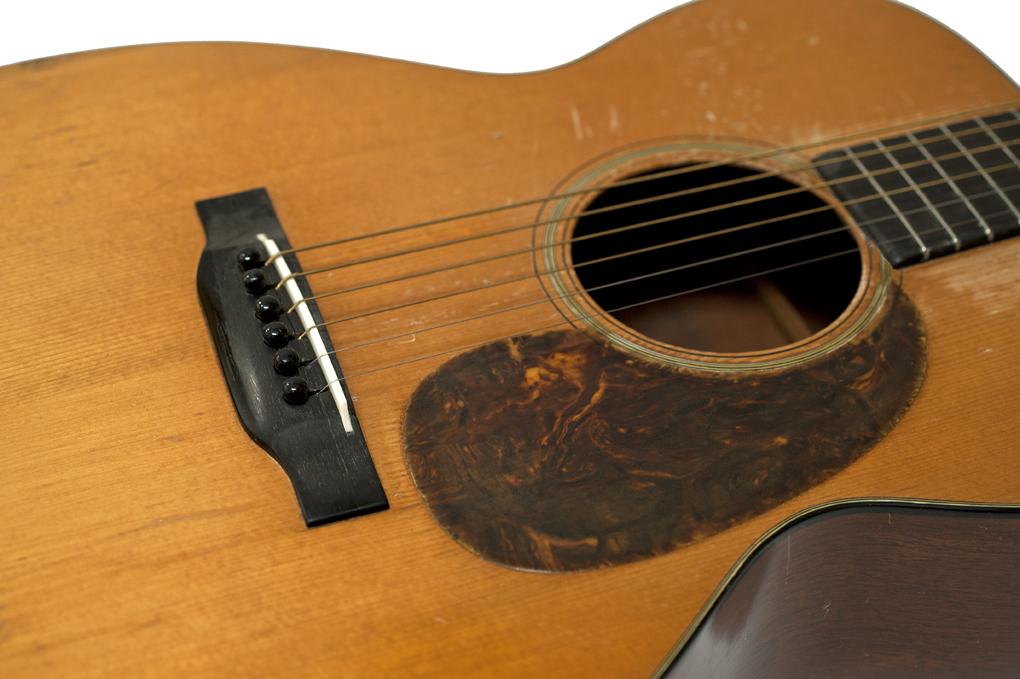
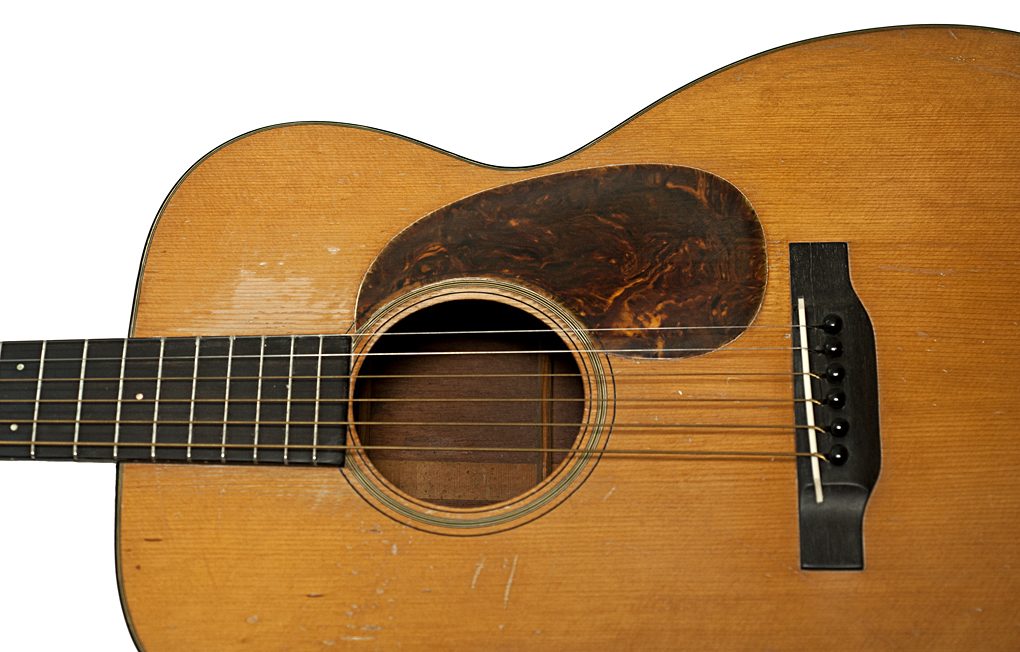
The later OM-18 is one of the first Martins to have the gold Martin logo on the front of the headstock. These early logos are gold leaf and without the black border found on the later gold decals.
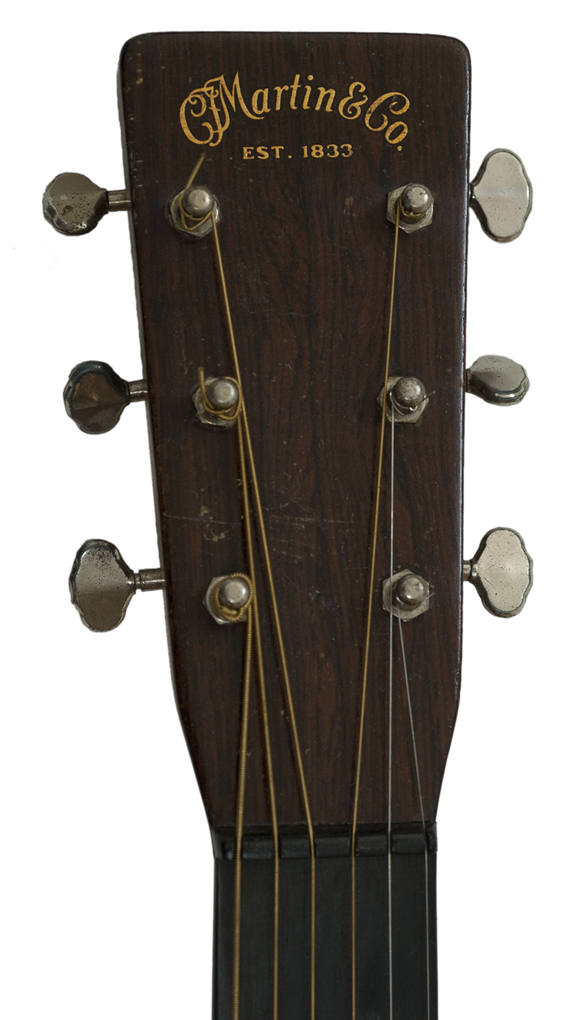
These transitional guitars have both the gold logo on the front of the headstock as well as retaining the stamped Martin logo on the rear.
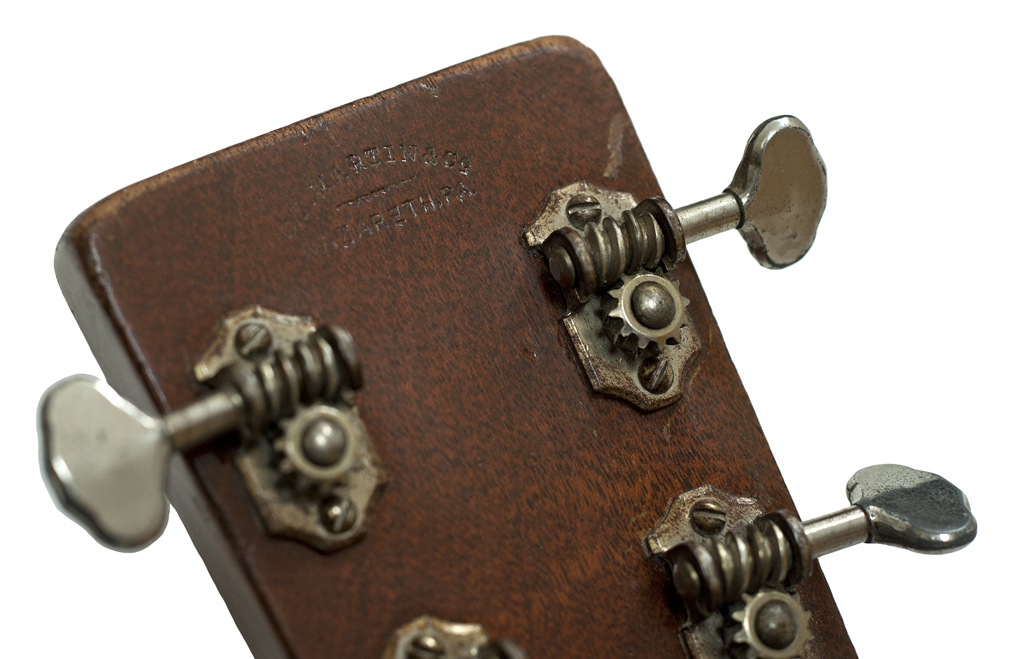
1930 Martin OM-45 DeLuxe
Serial # 44070
Stamped September 25, 1930
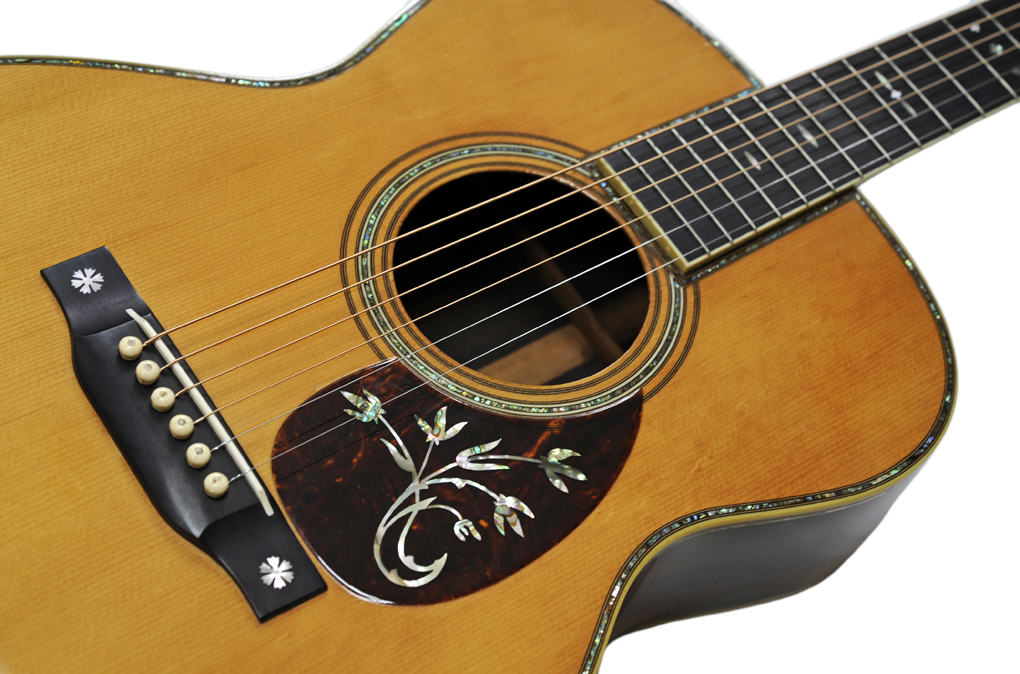
Priced at $225 at it's introduction in 1930, the OM-45 DeLuxe was Martin's most expensive production guitar, a step above the Style 45, with inlaid pickguard and bridge, and engraved gold tuners with pearl buttons. Martin carefully selected finer woods and other materials for their highest quality guitars. The quality of materials, with perfectly consistent matching pieces of pearl throughout, is higher on this guitar than on any other Style 42 or 45 I have seen, from the 19th or 20th Century.
The first example, purchased used by Roy Rogers for $30 during the Depression, had a somewhat different design on the pickguard.
The DeLuxe was discontinued within a year, after a handful of individual examples and three batches of three, due to Martin's inability to source the distinctive DeLuxe parts.
This example is one of five known to exist today.


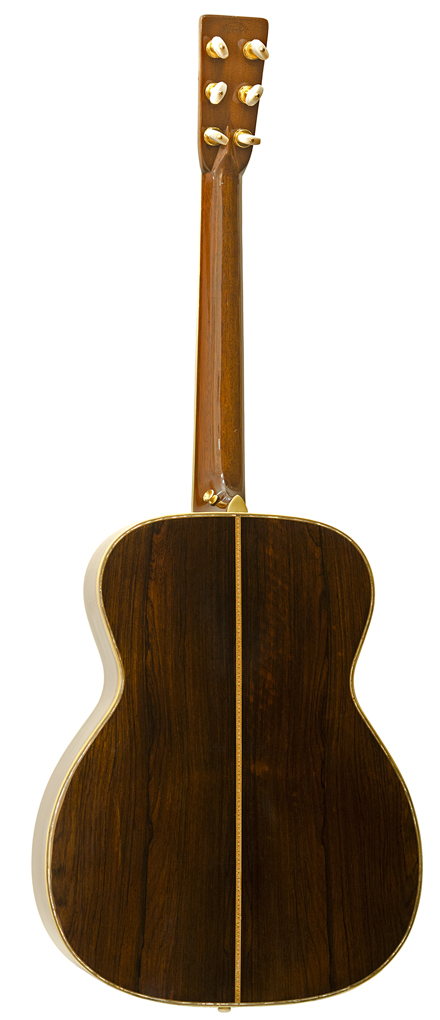
The OM-45, with it's solid headstock, initiated a slightly simpler torch design than was seen on previous Style 45 Martin headstocks.

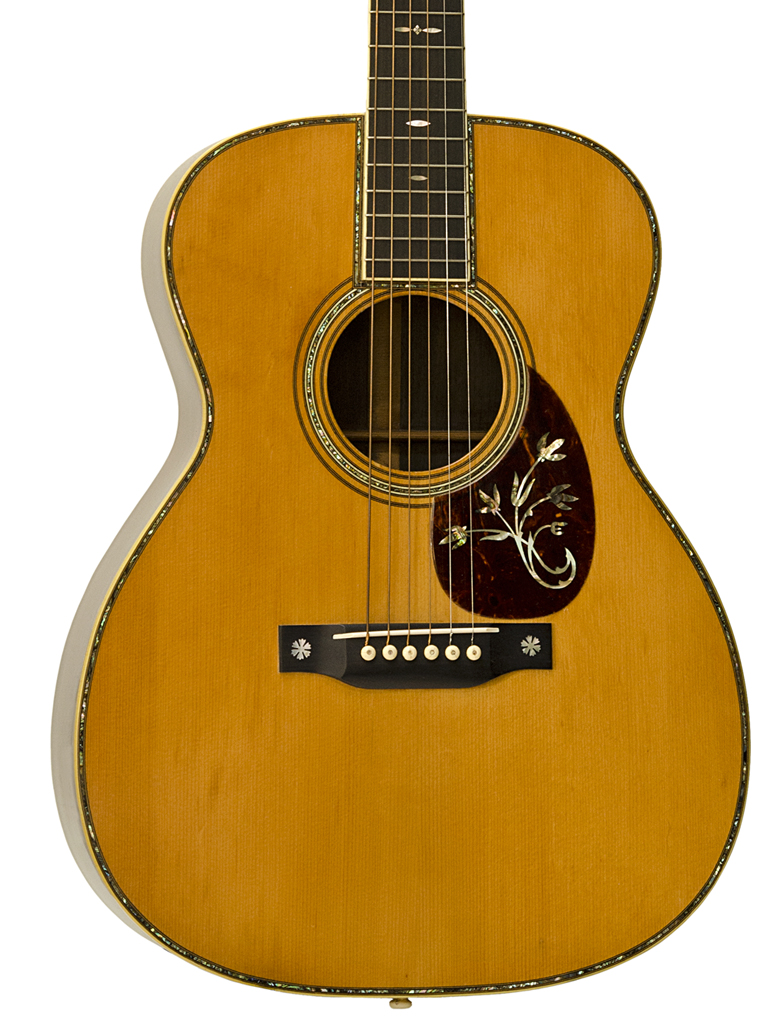
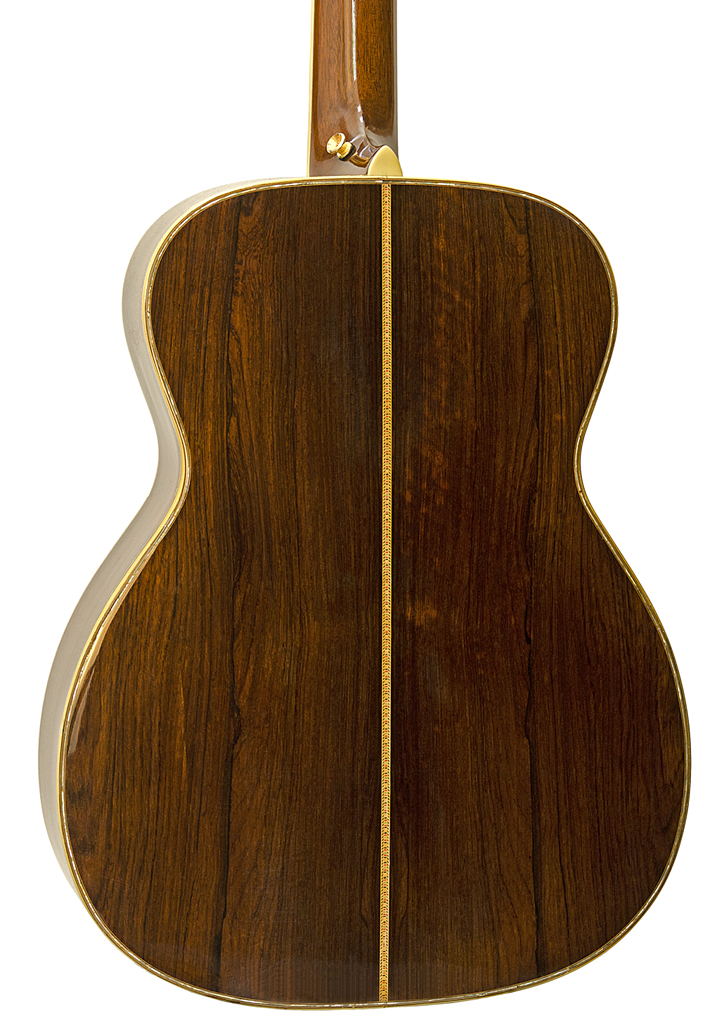
earlymartin.com
To See Robert Corwin's Classic Photography of Folk and Roots Musicians, visit:
For Information on Photography for
Exhibition, Publication, CD's, Promotion, Web Pages, Tour Books,
to Purchase Photographic Prints, or
If You Have Questions About An Early Martin Guitar:
e-mail: Robert Corwinentire site copyright ©1998 through 2018 Robert Corwin/Photo-Arts. All rights reserved.